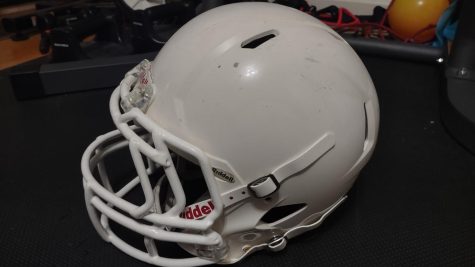Concussion Dangers
Concussions: one of the most common injuries in sports. A concussion caused when the head takes hit that causes the brain to move back and forth rapidly. Usually, the symptoms of a concussion last for about 1-12 weeks, but if a person repeatedly gets concussion, this may lead to some major problems. In the National Football League (NFL), concussions and neck injuries are all too common. While the league has taken many measures to limit head and neck injuries, players are still experiencing these types of injuries regularly and unfortunately, the long-term impact is alarming. What are these long-term effects? Can they be treated? Do players nowadays even feel safe?

What are the long-term effects of concussions?
There are several physical effects of a concussion. According to the Mayo Clinic (mayoclinic.org), some post-concussive symptoms include loss of concentration and memory, headaches, dizziness, fatigue, irritability, insomnia, and ringing in the ears. However, these are all temporary, and according to the University of Utah, only about 20 percent of people experience these symptoms for more than six weeks. But there are several lifetime psychological problems that can stem from concussions. Chronic traumatic encephalopathy (CTE) is when the condition of the brain starts to deteriorate due to repeated head trauma such as concussions. Unfortunately, CTE can only be studied by doing an autopsy on certain sections for the brain, so it is not understood fully quite yet. From the autopsies that experts have conducted, they have found that CTE is found in those who have high risk of head traumas, such as boxers, football players, and military personnel.
What happens to people with CTE?
CTE is quite rare, and experts do not know much about it yet, but they have found that it can lead to many problems within the human mind. According to the Mayo Clinic (mayoclinic.org), some symptoms of CTE include impulse and emotion control problems, progressive dementia, depression, anxiety, and even suicidality. There have been many NFL players who were diagnosed with CTE, but possibly the most notable was Aaron Hernandez. Hernandez had a criminal record dating back to 2007, when he was a freshman tight end at University of Florida. He was signed to a $41 million contract with the New England Patriots in 2012, the second largest ever for a tight end at the time. However, it seemed that Hernandez could not stay out of trouble. He was constantly at the center of investigations for felonies and had served several small sentences until April 15, 2015, when he was found guilty of first-degree murder in the killing of Odin Lloyd. He was sentenced to a mandatory life sentence without parole. Hernandez was also found to be connected to several other killings. About two years after his life sentence, Hernandez was found dead in his cell. He had hanged himself by a bedsheet in his cell. His death was ruled a suicide. Later that year, doctors had performed an autopsy on Hernandez’s brain. They discovered that he had stage-three CTE, which is the second-highest stage possible. Hernandez is probably one of the most prime examples of a confirmed case of CTE, but there have also been many people who have shown symptoms of the rare disease, most notably former Bucs wide receiver Antonio Brown. Brown, who is notorious for causing trouble on and off the football field, is believed to have CTE. His most recent display of symptoms was during a January 2 football game against the New York Jets. After allegedly being forced to play while injured, Brown took off his jersey on the sideline and ran out of the stadium. Brown has also displayed aggression and lack of impulse control over the past few years, including an altercation with his former general manager Mike Mayock, when he allegedly called Mayock a racial slur.

Do football players feel safe?
Even the latest advancements in technology and changes in rules are not enough to eradicate head and neck injuries, and it does not seem that there will be any way of doing this soon. Football fans are constantly concerned about player safety, but how do players feel? Owls tight end Jared Hospedales, Jr. says that at times he does not feel safe playing the sport he loves: “We don’t have neck protection, and there is only so much that a helmet can do. Whenever I try to make a tackle, there is always that thought in the back of my mind.” Hospedales is not the only one who had a slight feeling of anxiety every time he steps onto the gridiron. Owls lineman Simon Yu also said that he feels unsafe at times. Yu spoke about how certain precautions can be taken by the player to avoid head trauma. “Some players don’t use proper technique and can injure themselves and others,” said Yu. Owls quarterback Joseph McHale felt similarly to Yu in the sense that players should be careful. “[When I play], I’m not charging in at someone headfirst. I’m not stupid,” said McHale. Despite the risks, Hospedales, Yu, and McHale continue to play the sport and make conscious efforts to keep themselves and other players safe.
Whether it be pee-wees or professionals, head injuries and football go hand in hand. While the short-term effects of head and neck injuries are as important as ever, the long-term effects can be just as scary, if not even scarier. In the long-lasting battle between injuries and players, it seems that injuries have been dominating. Now, it is time for the players to step up and do everything that they can to keep themselves safe from the dreaded concussion.

Hello there! I’m a member of the Class of 2025 and sports editor for Horizon. I love playing, watching, and writing about all things sports. My favorite...





















